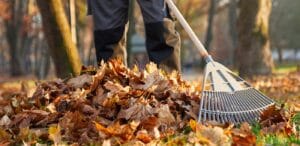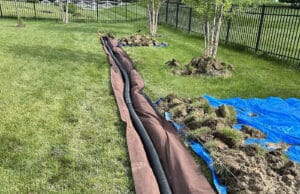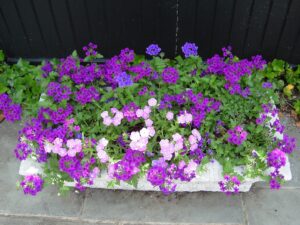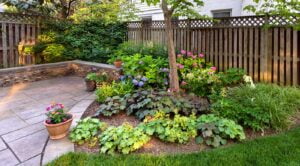Essential Fall Landscaping Checklist for Autumn
As summer fades and the cooler days of autumn arrive, both residential and commercial property owners should prepare their landscapes for the seasonal changes ahead. Autumn is the perfect time to ensure your yard is healthy and ready to endure the winter months. Proper fall maintenance can promote strong plant growth, improve the appearance of your property, and save time and effort come spring. The work and preparation done in the Fall will pay off next Spring and Summer!
Here are some essential steps you can take to get your landscape ready for autumn.
- Rake and Remove Fallen Leaves: Fallen leaves, while beautiful, can create issues if left unchecked. A thick layer of leaves can suffocate your lawn by blocking sunlight and trapping moisture, leading to mold growth and diseases. Regularly rake leaves or use a mulching mower to shred them into fine pieces that can decompose into natural fertilizer. Composting the leaves is also an eco-friendly way to deal with the debris. Check out our post about what you can do with Fall leaves.
- Feed Your Lawn: Fall is an ideal time to fertilize your lawn, as grass roots continue to grow in cooler weather. Applying a slow-release fertilizer rich in nitrogen will help your lawn store nutrients over the winter and green up quickly in the spring. This is also a good opportunity to address any bare or patchy areas by overseeding your lawn.
- Aerate and Seed: Over time, soil can become compacted, making it harder for air, water, and nutrients to reach the roots. Aerating your lawn in the fall will help break up compacted soil and improve overall soil health. It’s especially important for high-traffic areas or clay-heavy soils. Aeration can be done with a manual or motorized aerator that removes small plugs of soil, allowing the ground to breathe. Applying grass seed after aerating will help promote a thick and healthy lawn, and the new grass will grow and thrive in the moderate fall temperatures. You’ll notice the results next season! Shorb has special equipment for aerating to get the job done right.
- Prune Trees and Shrubs: Pruning in the fall can prevent damage during winter storms and encourages healthy growth in the spring. Focus on removing dead, diseased, or damaged branches. Prune deciduous shrubs and trees after their leaves fall to see their structure more clearly. For evergreens, avoid heavy pruning but remove any dead or broken limbs.
- Plant Fall-Friendly Flowers and Trees: Autumn is a great time to plant hardy flowers, shrubs, and trees that thrive in cooler temperatures. Consider adding chrysanthemums, pansies, or ornamental kale to your garden beds for vibrant fall colors. Planting new trees and shrubs in the fall allows them to establish their root systems before winter, giving them a head start for spring growth. Check out our post about planting bulbs in the Fall.
- Prepare Flower Beds and Garden Plots: As the growing season winds down, take time to clean up garden beds by removing dead plants and spent flowers. Mulch the beds with organic materials like shredded leaves or straw to insulate plant roots and prevent weeds from sprouting. If you grow vegetables, remove any remaining crops and add compost or manure to replenish the soil’s nutrients for next year.
- Protect Vulnerable Plants: Certain plants may not fare well in colder temperatures. Wrap tender shrubs, such as roses, in burlap or protective fabric to shield them from harsh winds and frost. You can also add a thick layer of mulch around the base of more delicate plants to keep their roots warm throughout the winter.
- Clean and Store Garden Tools: Autumn is the perfect time to clean, sharpen, and store your garden tools. Properly maintaining your tools will extend their lifespan and ensure they’re ready for use next season. Drain water from hoses and irrigation systems to prevent freezing and damage during winter.
- Check and Maintain Gutters and Drains: Falling leaves can quickly clog gutters and drains, leading to water buildup and potential damage to your home’s foundation. Clean out your gutters regularly throughout the fall, and ensure that downspouts are clear to direct water away from your house.
- Winterize Your Lawn Equipment: Before storing your lawnmower and other equipment for the winter, perform any necessary maintenance. Drain the fuel, clean the blades, and lubricate moving parts to keep everything in top condition for next year.
Final Thoughts
Prepping your landscape for autumn is a crucial step in maintaining a healthy, attractive property year-round. Some of these tasks can be done on a DIY basis, however, landscaping professionals like Shorb Landscaping have the proper equipment and expertise to get the job done right. By investing time and effort into fall yard maintenance, you’ll ensure that your plants and lawn are better equipped to handle the winter and thrive when spring arrives. Happy autumn gardening!







